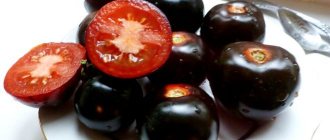Garden roses are one of the most delicate and beautiful plants. The most beautiful flowers in the garden delight the eye with a variety of types and colors; they leave no one indifferent to them.
Rose Mairas Rose
English roses are a new type of rose that became popular at the end of the 20th century, but there are already more than 200 varieties of them. Among all varieties, park roses stand out for their long and abundant flowering.
Rose Mary Rose: photos of flowers, description of the variety, reviews and growing methods
Those gardeners who decide to plant new varieties of rose bushes in their flower gardens should pay attention to the “queen of flowers” Mary Rose, one of the “Austin roses”.
David Austin - famous English breeder
, who, since the middle of the last century, has been developing new varieties of these flowering perennials based on old English roses. As a result, he developed a large number of new varieties and hybrids of these flowers (more than 200!), and although these perennial shrubs have not yet been identified as a separate group, many of them are well known to flower growers all over the world.
Below we will describe the rose Mary Rose - one of the brightest representatives of the Austin rose family.
The content of the article:
1. Roses Mary Rose - the history of the creation of the variety
2. Description of the rose Mary Rose
3. Growing and care
4. Advantages and disadvantages of "Mary Rose"
5. Reviews from flower growers
Flower propagation
It is not difficult to propagate roses; the main thing is to create the right conditions for the development of young shoots.
There should be 3 leaves left on the shoot, of which the bottom 2 should be removed
To preserve varietal characteristics, the Mary Rose rose is propagated vegetatively. The most successful way at home is propagation by cuttings. This should be done after it has bloomed and become stronger. Cuttings should be taken from the middle of the bush.
To propagate Mary roses by cuttings, you need to select and cut off mature shoots. Each should have 3 sheets left, of which the bottom 2 should be removed. Then plant the cuttings at a distance of about 20 cm from each other. It should be planted at such a depth that only the remaining leaf is visible from the soil.
The soil should be prepared from garden soil, humus and sand. You need to mix in a ratio of 1:2:1. The soil must be loose so that water permeability and air permeability are higher, and the roots receive all the necessary microelements. To make the soil loose, you can use coconut shavings.
Note! To fertilize the soil, it is best to use AVA type fertilizer, which has a long-lasting effect.
Austin roses "Mary Rose" - history of creation
This variety was obtained by crossing Wife of Bath and The Miller rose bushes. The name of the new roses was given in honor of an English warship that sailed during the time of Henry VIII Tudor.
The main positive qualities of Mary Rose are:
- re-blooming;
- strong pleasant aroma of blossoming buds;
- bushes grow proportionally.
The variety turned out to be so beautiful, strong and resistant to frost and disease that the Mary Rose rose was later used to create new varieties based on it.
Description and characteristics of this variety
The main main qualities of this rose are considered to be: a strong bush on which many branches grow, good resistance to various diseases, excellent tolerance to cold weather. The color of the rose is alluring pink, the shape of the flowers is cupped, the petals are pleasantly terry. The flower grows in diameter up to ten centimeters, and the bush itself has the same height and width, about sixty centimeters. As the flower blooms, the lower petals become pale pink and turn slightly in the opposite direction.
Interesting fact. There are more than 800 varieties of English rose. The shrub has thorny shoots on which clusters of three to seven flowers grow. The diameter of each color is about twelve centimeters. One flower has approximately sixty-five petals.
The greenery of the plant is lush, matte, bright green. The rose blooms already in the first half of summer, and delights with its beauty right up to mid-autumn. The smell of the flower can be compared to a mixture of honey and almonds. After cutting, the flowers quickly wither, so it is better to admire the most beautiful roses when they are on the bush. There are several varieties of the Mary Rose variety
Based on this variety, the following hybrids were bred:
- Winchester Cathedral – white rose;
- Redoute is a pastel horn rose.
This variety is considered the most common in England. Mary Rose is the best variety of the great breeder. Advantages of this rose:
- The foliage begins to grow from the very bottom, it is beautiful, lush, dense and spreading. The foliage is excellent as tapeworms.
- Rose flowers have many different shades and a pleasant scent.
- This variety is not prone to diseases and tolerates severe frosts well.
This variety also has disadvantages:
- A lot of thorns grow on the shoots.
- After cutting, the flowers quickly wither.
Rose Mary Rose: photo and description
This perennial is a powerful, proportionally developed bush with a large number of erect shoots up to 0.9-1.1 m high, the diameter of an adult bush is about 0.6 m. The shoots are long, medium-leafy, powerful with an average number of thorns.
Blooming buds are collected in inflorescences of 3-6 pieces each. Their shape is cup-shaped, the flowers are double, dense, with a large number of pink petals (up to 50-55 pcs.). Flowering is repeated, wavy, there are practically no breaks between waves. The first flowers on rose bushes appear in the first ten days of June. Flowering continues until early autumn.
Excellent variety!
• Black rose BLACK BACCARAH • Hydrangea paniculata VANILLA FRAZE • Liana WISTRINA
Fully opened buds in diameter can reach 7-8 cm. When the buds bloom, a strong floral aroma is felt with light honey and almond notes. In blooming buds, the outer petals bend slightly outward, and the inner petals bend toward the center. The intense pink color of the petals is characteristic only at the beginning of flowering; as they bloom, the outer petals turn pale.
Roses of Austin MARY ROSE photo
The variety is not suitable for cutting - flowers do not last long in water (no more than 5-6 days).
Marie Rose is highly resistant to most diseases that affect other varieties of roses. Also, this perennial shrub is highly resistant to frost, so in most regions of Russia it does not require special shelter for the winter, only hilling.
Rose blossom
Rose Olivia Rose - description of varietal shrub
Young bushes should not be allowed to bloom early. It must strengthen and get used to the soil, all efforts should be directed to the development of the root system, and not to flowering.
The period of activity for English rose bushes begins in early June and lasts until October. Flowering occurs 2 times per season. The rest of the time the rose is in a dormant period.
Before the beginning of August, buds must be removed from young bushes so that the young plant develops its root system and does not devote all its energy to flowering. If the rose bush is more than a year old, there is no need to pick off the flowers and buds.
It blooms profusely. The flowers fade quickly and can be trimmed with pruning shears to give them an aesthetic appearance.
What to do if it doesn't bloom
The main reason that a rose bush does not bloom is the so-called blind or dormant shoots. The buds freeze on them, do not grow and do not produce new shoots. To revive such a dormant bush, and it begins to bloom, you should carry out severe pruning. You need to cut off shoots that already have 5-6 leaves. This will cause new strong shoots to grow and flowering will resume.
Rose Mary rose: cultivation and care
The main nuances of planting and further caring for the Mary Rose variety are the same as for other varieties of roses. It is necessary to prepare a site for planting this shrub with fertile, loose soil in which moisture does not stagnate. It is also necessary that this rose is well illuminated by the sun in the morning and evening hours, and is protected from cold winds and constant drafts.
When planting Mary Rose seedlings, the distance between planting holes should be at least 1.0-1.2 m so that the bushes can grow freely without shading each other.
Rose Mary rose photo in the garden
Further plant care includes:
- regular watering as the soil dries out;
- loosening the root zone and removing weeds;
- fertilizing several times per season;
- spring and autumn pruning of bushes;
- preparing the variety for winter.
When preparing roses for winter, you should take into account the characteristics of the region: in warm areas this shrub does not need to be covered, but in the middle zone, in the Urals and in other areas with a similar climate, without shelter these flowers can freeze out during severe frosts.
Plant care
Like any plant, Rosemary Rose requires some care. To keep the bush healthy and blooming profusely, you need to follow simple rules.
Watering rules and humidity
Rose Eden Rose - description and characteristics of the variety
At first, you need to water the planted bush at least twice a week. The soil must not be allowed to dry out. But at the same time, you shouldn’t water the plant often. This can lead to rotting of the root system.
Important requirements for watering the bush:
- It is necessary to water in a timely manner; the soil should not be allowed to dry out or, conversely, the soil should not be too wet;
- It is better to water in the evening;
- You need to pour approximately 4-7 liters of water under the plant, depending on its size.
For better growth and development of the plant, you need to make a mound of soil around the trunk. It needs to be covered with mowed grass or pine chips. They will maintain the necessary humidity and temperature for root development. The thickness of the coating should be about 10 cm.
Fertilizing and soil quality
Don't get carried away with feeding the plant. During the first time after planting, the soil contains a sufficient amount of microelements necessary for the development of the rose. Fertilizing should be done seasonally. In the spring you need to use nitrogen, and in the summer - potassium and phosphorus. If the soil is loose enough and the right amount of moisture and air flows through it, the bush will develop quickly and correctly.
Pruning and replanting
The best time to prune Mary Rose bushes is in the spring. As soon as the buds begin to swell, it’s time to take up the pruning shears. The purposes of pruning may vary. For example, you can prune a bush so that it begins to bloom early and abundantly. Or is it trimming to give the desired shape.
Important! In autumn, bushes should be pruned for sanitary purposes. Sick and damaged shoots are removed from the rose.
Features of wintering a flower
Rose Marie Rose tolerates winter well. At air temperatures down to −7 °C, it does not need shelter. You need to cover the bush when persistent frosts begin. Before this, you need to trim the bush and cover its base with earth. Spruce spruce branches are best suited for covering roses.
Important! Do not hill up with peat, sand or sawdust. Due to their looseness, they will not save the bush from frost, but, on the contrary, will contribute to its freezing.
Spruce spruce branches are best suited for covering roses.
Advantages and disadvantages of the variety
Let's look at the pros and cons of Mary rose in comparison with other varieties.
The main advantages of this variety of roses include:
- repeated long-term flowering (often before the onset of frost);
- large, regularly cup-shaped flowers with a strong scent;
- high resistance of the variety to cold and most diseases;
- high decorative value of this shrub.
The disadvantages of gardeners include:
- a large number of thorns on the shoots;
- cut flowers are worth little in bouquets.
Reviews from flower growers
According to experienced flower growers, the Mary Rose variety is perfect for cultivation in northern floriculture conditions and has proven itself well when grown in the Yaroslavl, Ivanovo and Kostroma regions. Positive reviews about it are based on the following observations:
- in regions with unstable weather, Mary Rose bushes rarely get sick;
- even under unfavorable soil and climatic conditions and winters with little snow, the variety overwinters well;
- in cold summers and in insufficient light, the rose consistently produces two powerful waves of flowering.
According to the observations of flower growers, the five-year-old rose bush Mary Rose, even with errors in care, remains very neat, but spreading: the dimensions of its above-ground part are 1x1 m. If the growing technology is followed, the plant produces a lot of flowers, and their sizes reach 12 cm in diameter.
Roses "Mary Rose" reviews
Below are reviews from some of the flower growers who have the Mary Rose rose variety growing in their garden:
Asami 777: In my garden, the Mary Rose is the first of the group of "Austin roses". I decided to diversify my flower garden and purchased this flowering perennial from the nursery. One season has passed since this rose was planted on my site and I can say that I am amazed by its abundant, almost constant flowering throughout the summer. To prevent flowering activity from decreasing, I regularly applied fertilizer to the bush. In winter, I hilled up a lightly pruned bush and covered it with spruce branches. In the spring, none of the shoots froze.
Sergey, Chelyabinsk region: In our region with unpredictable weather conditions, I still took the risk of planting this rose variety on the site. The result was stunning - the bush practically does not get sick, does not freeze (but I still cover it for the winter), blooms actively and profusely.
Rose Mary Rose video
All varieties of “flower queens” from the “Austin roses” group are distinguished by abundant regular flowering, high resistance to disease and cold, beautiful petal color, and large flowers.
And the Mary Rose variety is one of the undeniably best rose bushes bred by David Austin. It should undoubtedly be taken into account by those flower lovers who want to plant new varieties of the “queen of flowers” in their flower garden.
Also, any interested gardener can leave reviews about Mary Rose roses and add their photos.
Growing conditions
Marys are called disheveled or unkempt
Rose Mary Ann
To obtain abundant flowering and lush green foliage, you need to consider the following requirements:
- Lighting. Rose Marie Rose is a shade-tolerant variety, so it is best not to grow it in full sun. For good growth and flowering, the plant needs enough sun in the morning or evening. At noon, light shade is desirable. In the bright sun the flowers fade.
- Correct landing. When preparing a planting hole, drainage with a thickness of at least 10 cm must be poured onto its bottom. For these purposes, you can use small crushed stone, broken brick or expanded clay. The hole should be 2 times larger than the root system of the plant. The roots and stem must be brought to proportional sizes, that is, the volume of the lower part must correspond to the upper. Before planting, it is recommended to trim the long roots of the rose so that they better absorb moisture. According to the instructions, the entire seedling should be placed in a nutrient solution of epin, zircon or HB-101 for several hours.
- The soil. Roses prefer fertile, loose soil. For planting, the soil mixture is prepared in advance from garden soil, sand and humus, mixed in a ratio of 1:1:2. You can add a little coconut shavings to give the soil looseness and better air and water permeability. It’s better to add long-acting fertilizers like AVA, which will saturate the plant with useful minerals for 2-3 years.
- Watering. After planting, you need to water it 2 times a week so that the soil near the roots does not dry out. Watering too frequently with poor drainage can lead to root rot. To better retain moisture in the root circle, you need to make a small mound of earth around the circumference. In addition, the plant responds well to mulching. Lawn clippings, pine chips or decorative gravel can serve as mulch. The layer thickness for a good effect should be at least 10 cm.
Important! Roses are also sensitive to fertilizing, but in the first year after planting, a sufficient amount of nutrients is contained in humus and long-acting mineral fertilizer.
The minimum amount of fertilizing is 3 times a season:
- In early spring after the soil has thawed. As a top dressing at this time, it is better to use nitrogen-containing mineral or organic fertilizers, such as horse, cow manure or bird droppings. Fresh manure cannot be used in its pure form; it must be left to rot or diluted with water in a ratio of 1:5. Bird droppings are diluted 1:10.
- After the first flowering. After pruning faded roses, fertilize with mineral fertilizer such as fertika. After any feeding, the plant should be watered generously at the root.
- The last fertilizing is done in September with fertilizer containing phosphorus and potassium. The ideal amount of fertilizing is 2 times a month, alternating organic and mineral fertilizers.
Further care measures:
- Pruning is an important part of the rose care process. If you prune a climbing rose like a hybrid tea, you may never see it bloom. Austin English bush roses are pruned using a simplified pattern. In the fall, pruning is done to provide shelter for the winter. The branches are shortened so that covering material can be placed over the bush. In the spring, after removing it, all branches are cut at approximately the same height, about 50 cm from the ground. After the plant begins to grow and buds begin to appear, you can perform sanitary pruning and remove weak or thickening branches. Pruning is done directly above the bud.
- Prevention of diseases. The first treatment against diseases is carried out in early spring after the soil has thawed with preparations based on copper and its compounds such as abiga-pik. The drug thiovit-jet is also widely used, which fights many diseases and some types of pests. Subsequent treatments should be carried out once a month. In addition, when the first signs of any illness appear, you need to spray the plant with one of the drugs described above as quickly as possible.
- Pest control. The possibility of aphids attacking young rose shoots increases in humid and hot weather. The frequency of preventive spraying against pests is once every 2 weeks. A good effect is achieved when using the drug spark or actara. However, every season new products appear on the market.
Growing a flower
It is not difficult to grow this type of English rose in garden plots. This can be done by both experienced gardeners and those just starting to get interested in beautiful plants. To grow, you need to follow certain rules.
This is interesting: Climbing rose Santana with blood-red flowers and velvet iridescence
Rose Mary Ann - description of the variety
Before planting the bush, the seedlings must be placed in a solution of a root growth stimulator, for example, heteroauxin. Thanks to this, the plant takes root better and tolerates planting more easily. If the root system is too long, it should be trimmed a little.
Important! Damaged roots should be cut back to healthy wood using pruning shears.
It should be replanted before abundant flowering begins. The best time to plant bushes is April-May. At this time, the rose begins to awaken after wintering and more easily accepts a new place to grow. You can also plant in the fall, but do not delay this so that the plant has time to take root and take root before the first frost.
Selecting a location
The best place to plant a Mary Rose bush is in partial shade. If you plant it in a sunny area, there is a chance that the leaves will get burned from direct exposure to sunlight. In general, this plant is not whimsical and does not require a special place for planting. The main thing is to choose the right soil.
How to choose soil and flower for planting
Good plant development occurs on fertile soil, which has a sufficient amount of microelements and increased breathability. The soil should be light and deep and provide the roots with access to air and moisture. If it is heavy clay, it needs to be loosened by adding peat and humus. You can also add sand to clay soil for better air and water passage.
If, on the contrary, the soil is sandy and too loose, it will not retain the required amount of moisture for the roots, and the flower will die. To improve such soil, you need to mix it with clay and add fertilizers in the form of humus or compost.
Note! The flower for planting must be strong and healthy with a good root system. The roots of the rose are quite long and go deep into the ground. Therefore, the depth of groundwater must be at least 100 cm, otherwise the root system will rot or the bush will become covered with black spots.
Boarding procedure
To begin with, in the place chosen for planting, you need to dig a planting hole and pour at least 10 cm of drainage layer on the bottom. It is not necessary to buy special drainage; you can use small crushed stone or broken pieces of brick. The size of the hole should be twice the size of the bush's root system.
This is interesting: How to prune a climbing rose in spring: important nuances + step-by-step instructions
The longest roots should be trimmed a little so that they absorb moisture better. For the best result, it is recommended to prepare a solution from epin, HB-101 or zircon and immerse the seedling in it for several hours.











